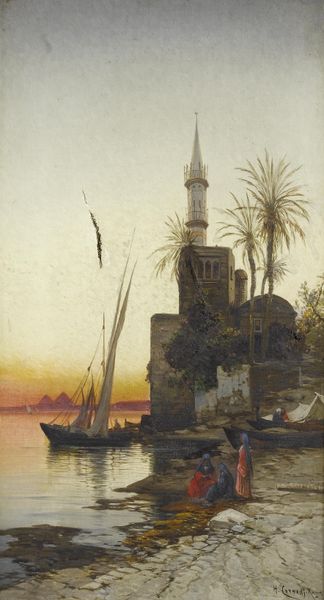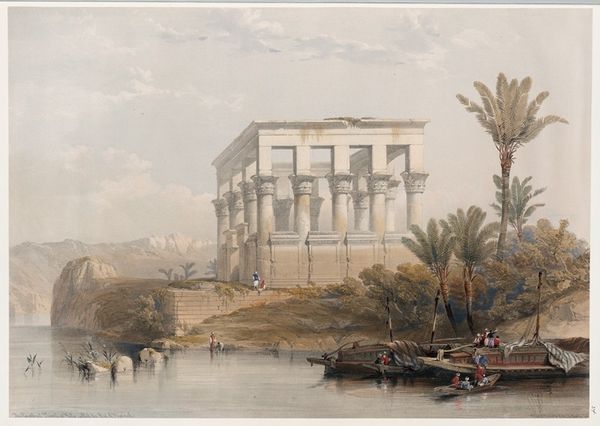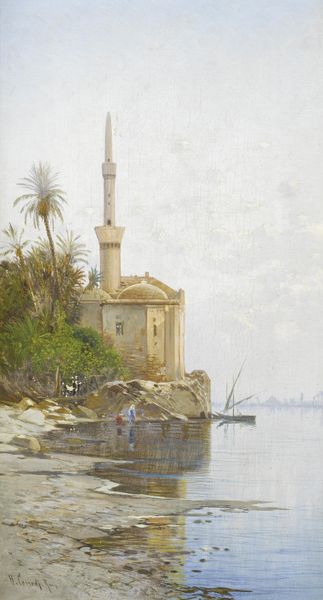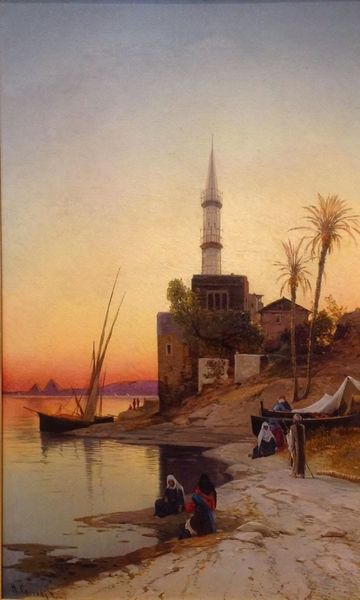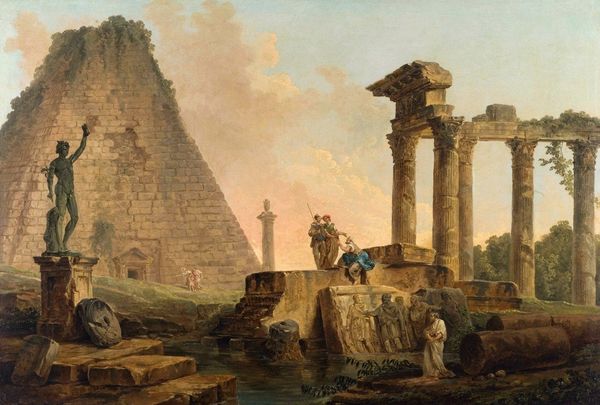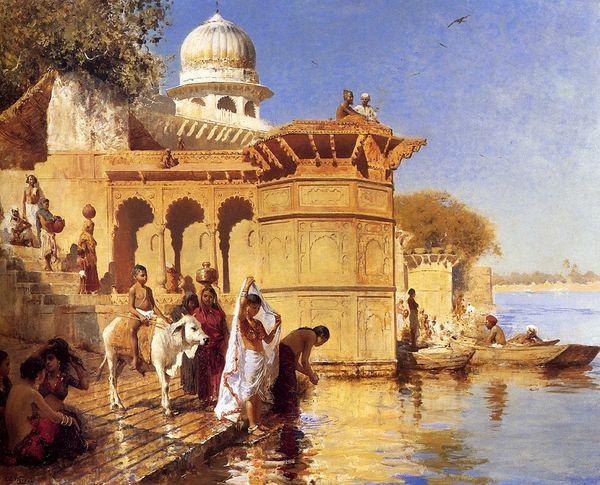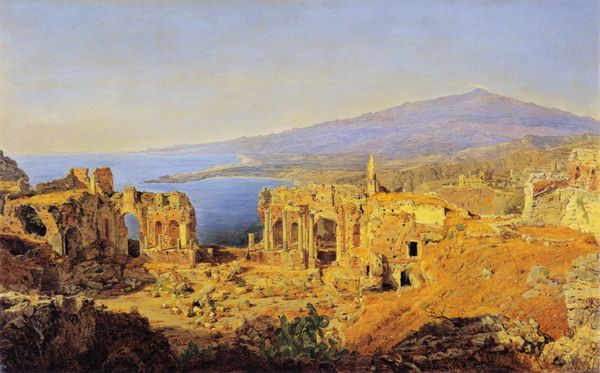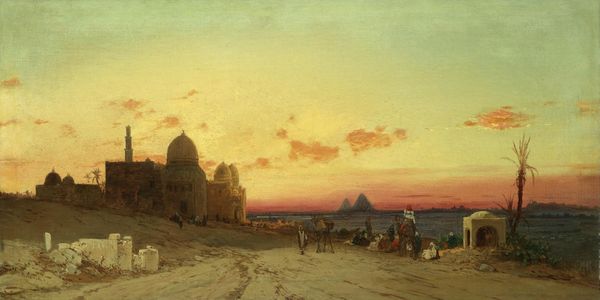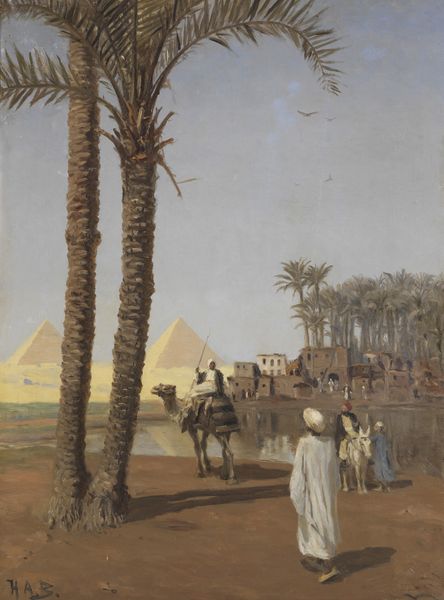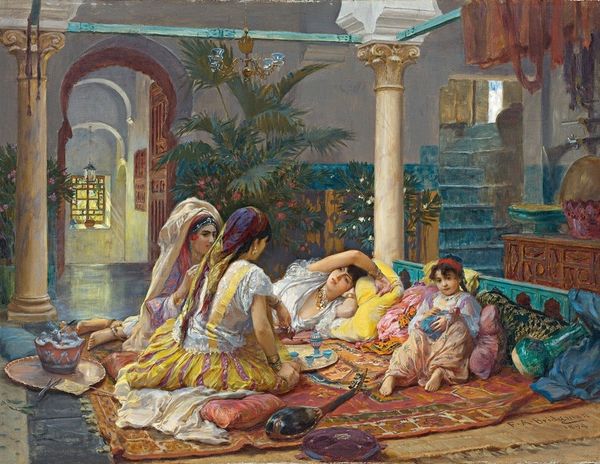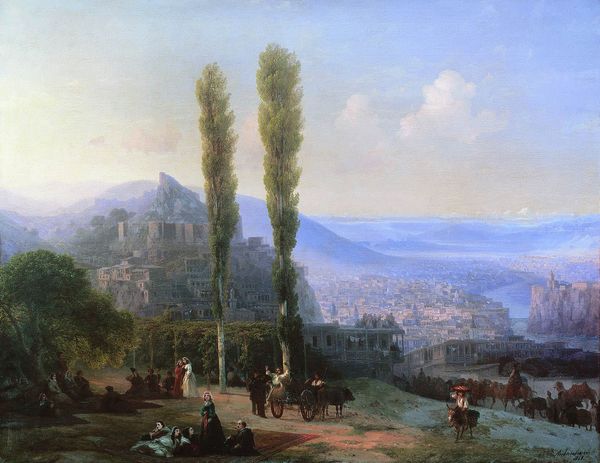
tempera, oil-paint
#
tempera
#
oil-paint
#
landscape
#
oil painting
#
orientalism
#
history-painting
#
realism
Copyright: Public domain
Curator: What strikes me first is the melancholic calm. It feels like watching a scene suspended between day and night. Editor: Indeed. This is Hermann Corrodi’s "The Temple of Trajan on the Nile, Egypt," an oil and tempera painting created in 1905. What is fascinating is its depiction through the lens of Orientalism, placing a grand, imagined past beside a humble, lived present. Curator: The figures in the foreground, grouped by the water, have a timeless quality, as if enacting a ritual we can only guess at. I'm drawn to the recurring visual theme: light hitting solid, ancient structures as time inevitably flows. The artist definitely wants to underscore the idea of civilization's lasting impact on our memory and behavior. Editor: Precisely. Corrodi, well-patronized by European elites during his time, played into this taste for the exotic and the historical. While on one hand romanticized, paintings such as this also subtly affirmed the narratives of European cultural and even colonial dominance, in that these are people whose rituals are observed, painted. Not the people of power themselves. Curator: It's a power dynamic definitely captured in brushstrokes and light. The crumbling temple and gathering figures beside it – almost spectral against the vast sky—highlight an inherent romanticism with the fallen grandeur. But do you think that ruins have special appeal here? That the ruin itself becomes an incredibly charged and symbolic element? Editor: Absolutely, ruins carried immense cultural cachet. They spoke to the rise and fall of empires, the cyclical nature of history and the passage of time, subjects deeply intertwined with Europe's own imperial ambitions and anxieties at the turn of the century. Consider too the public exhibition of such imagery – who it was created for and how it shapes assumptions. Curator: Seeing it this way gives more depth to what I initially felt was pure nostalgia. It reflects a complex set of cultural desires and projections. Editor: Exactly. The painting is not just a scenic view, but an active participant in shaping historical perceptions and societal narratives. Curator: A beautiful but loaded vision then. It’s been enlightening to consider its layers beyond the aesthetic appeal. Editor: Indeed, a reminder of how art serves as both a mirror and a shaper of historical forces.
Comments
No comments
Be the first to comment and join the conversation on the ultimate creative platform.
